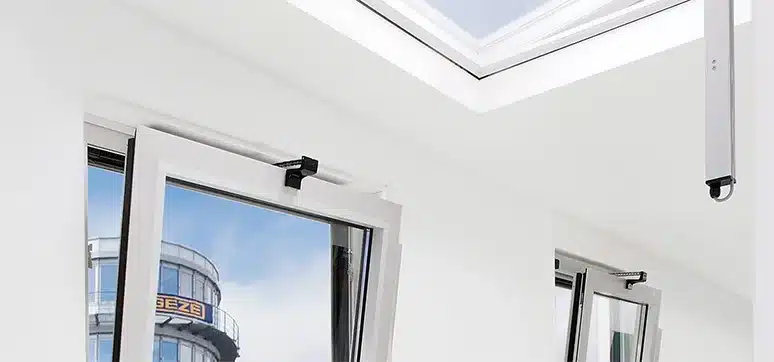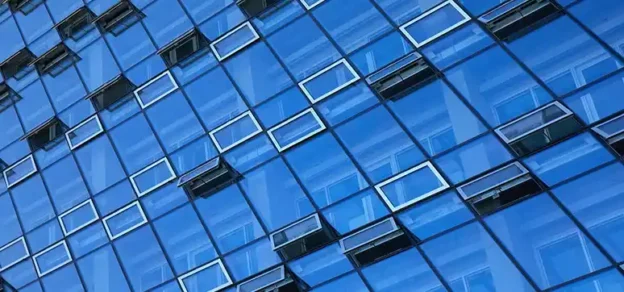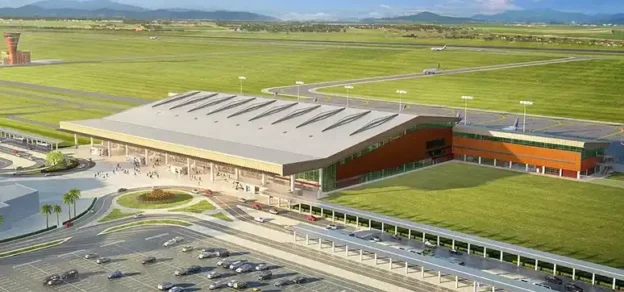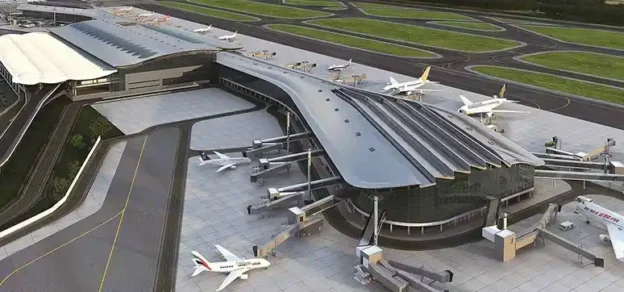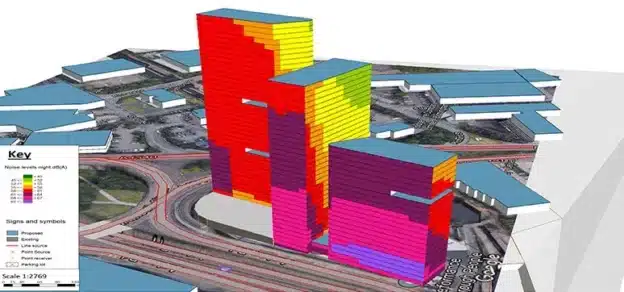Introduction to Natural Ventilation:
Ventilation in a building is a very important and crucial factor that ensures hygiene for its occupants and at the same time, provide comfortable and an ideal controlled ambiance. The Invention of Ventilation, ‘Natural Ventilation’ to be more precise, cannot be ascribed to a certain date. The first attempt on ventilation was made as early as the stone-age period of pre-historic times, when man used fire to produce heat for preparing food and to keep predators away.
In this process, he discovered the need to have an opening in the roof of their caves to let out the smoke and simultaneously to supply air to keep the fire burning. The warm temperature out of the fire, along with ventilation in roof top, created a comfortable ambiance for the stone-age man living in caves.
The concept of ventilation can be seen very predominantly in the ancient buildings and castles in the periods of early civilization.However, research and studies on modern ventilation techniques started from as early as 1895 by The American Society of Heating and Ventilating Engineers (ASHVE).
When people or animals are present in buildings, ventilation air is necessary to dilute odors and limit the concentration of carbon dioxide and airborne pollutants such as dust, smoke and volatile organic compounds (VOCs). It also helps in heating, cooling, humidification or dehumidification of the ventilated area.
Defining Ventilation :
Ventilation as defined by National Building Code 2005 (Part8, Sec1, Sub-Sec 5.1) “Ventilation of buildings is required to supply fresh air for respiration of occupants, to dilute inside air to prevent vitiation of body odors and to remove any products of combustion or other contaminants in air and to provide such thermal environments as will assist in the maintenance of heat balance of the body in order to prevent discomfort and injury to health of occupants”
Ventilation as defined by ASHRAE – American Society of Heating, Refrigerating and Air-Conditioning Engineers (Standard 62.1)
“Ventilation is the intentional movement of air from outside a building to the inside. Ventilation air, as defined in ASHRAE Standard 62.1 and the ASHRAE Handbook, is the air used for providing acceptable indoor air quality. It mustn’t be confused with vents or flues; which mean the exhausts of clothes dryers and combustion equipment such as water heaters, boilers, fireplaces, and wood stoves. The vents or flues carry the products of combustion which have to be expelled from the building in a way which does not cause harm to the occupants of the building. Movement of air between indoor spaces, and not the outside, is called “transfer air”. The vents or flues expel the products of combustion from the building in a way which does not cause harm to the occupants of the building”.
The concept of ventilation and/or natural ventilation has evolved over years with various research studies happening on this subject since ages.Ventilation combines both experimental and numerical computational techniques. In fact numerical methods have been known since the time of Newton in the 1700s.
The simple fact of ventilation revolves around the concept of “remove or move away heat that is built up or trapped between obstacles”.Ventilation therefore, is not just a concept of architectural engineering and building construction but spread across different disciplines.
Concept of Natural Ventilation:
Natural Ventilation (National Building Code 2005, Part8, Sec1, Sub-Sec 5.4):
The rate of ventilation by natural means through windows or other opening depends on:
1. Direction and velocity of wind outside and sizes and disposition of openings
2. Convection effects arising from temperature of vapor and pressure difference. The code also provides the basis and guidelines for natural ventilation in both Industrial and Non-Industrial buildings. Under Sub-sec 5.4.3, the NBC also states the various design guidelines for Natural ventilation considering
– Wind action , depends on wind behavior
– By stack effect (A stack effect occurs when air inside building is at a different temperature than air outside. When the inside temperature is higher than outside, cool outside air will tend to enter through opening at lower level and warm air will tend to leave through opening at higher level. It is therefore advantageous to provide ventilators at ceiling level or provided in roof).
Ventilation requirement for LEED certification:
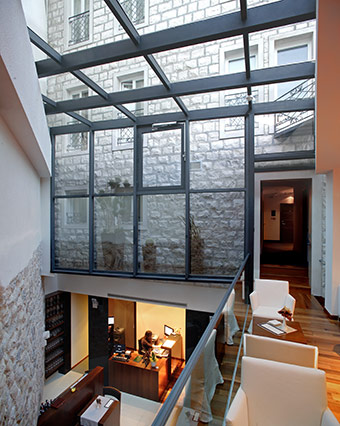
Requirement as per IEQ (Indoor Environment Quality) category in LEED Standards:
The Indoor Environmental Quality (IEQ) category in LEED standards, which is one of the five environmental categories, was created to provide comfort, well-being, and productivity of occupants. The LEED IEQ category addresses design and construction guidelines especially: indoor air quality (IAQ), thermal quality, and lighting quality.
Indoor Air Quality seeks to reduce volatile organic compounds, and other air impurities such as microbial contaminants. Buildings rely on a properly designed ventilation system (passively/naturally- or mechanically-powered) to provide adequate ventilation of cleaner air from outdoors or recirculated, filtered air as well as isolated operations (kitchens, dry cleaners, etc.) from other occupancies.
Latest Technologies in Natural, Smoke and Heat Ventilation:
Why don’t we just automate the opening and closing of windows for everyday ventilation? Can a regular window ventilation system help in achieving a green atmosphere? Why not! There are answers available for such typical requirements. The niche solutions through window opening systems are available which can be used both for natural day-to-day ventilation as well as for smoke and heat ventilation. Such window drive systems are convenient, reliable, safe and secure.
Need for natural Smoke and Heat Ventilation Systems:
For day-to-day regular ventilation purposes and to maintain hygiene conditions within the building premises, either a manually operated or an electrically operated window opening systems can be used and for smoke and heat ventilation purposes, fully automated and electrically operated window opening systems can be used. In the event of fire, considerable quantities of combustion products such as smoke, toxic fire gasses and heat energy are produced. The most important task of smoke and heat ventilation system is to efficiently and quickly discharge these combustion products from the building during fire. This significantly reduces the risk for people trying to escape and also for fire rescue services.
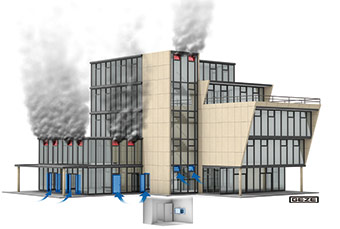
Victims of fire accidents are victims of smoke. 90% of fatal fire accidents are due to suffocation caused by smoke filled gasses. Smoke filled gasses have lethal constituents as well as corrosive components which burn the lungs when inhaled. In the event of fire, large amount of smoke gas, on account of thermal buoyancy fill the building with smoke. This leads to an increase of ambient temperature and creates a thermal stress on the building structure which might result in the collapsing of the building itself. Smoke and Heat Ventilation not only helps in saving of lives but also helps in saving the basic structure of the building itself.
Ventilation is an important part of structural and passive fire protection tactics, and involves the expulsion of heat and smoke from fire building naturally and thus permitting the firefighters more easily to rescue the trapped individuals and attack fire. Thus the use of natural smoke and heat ventilation systems offer not only in providing LEED credits to Green buildings, but also acts as passive fire protection system during a fire or smoke exigency.
For more details, please write to: GEZE India Pvt Ltd
